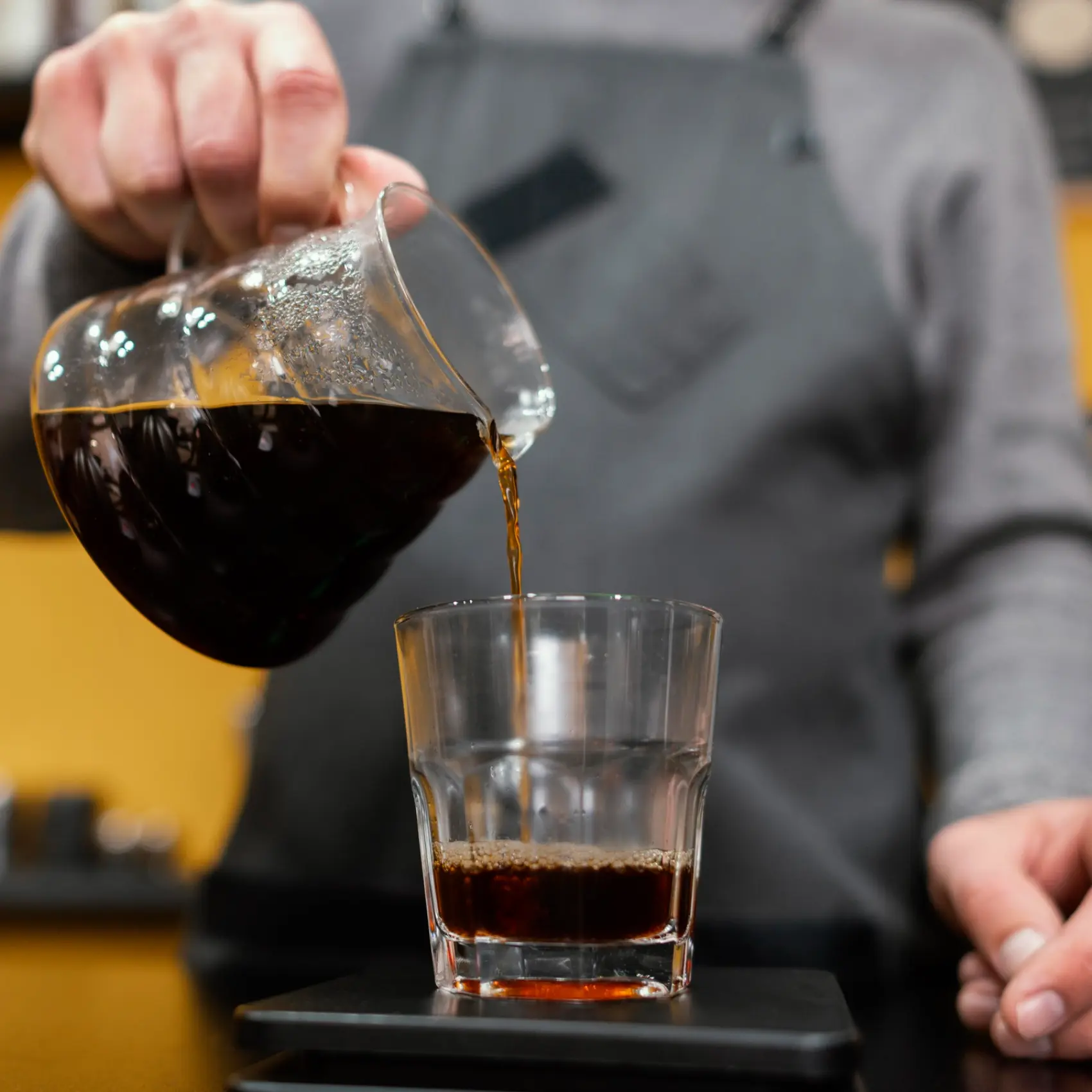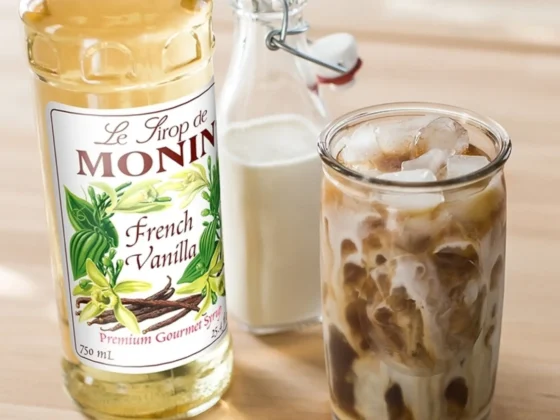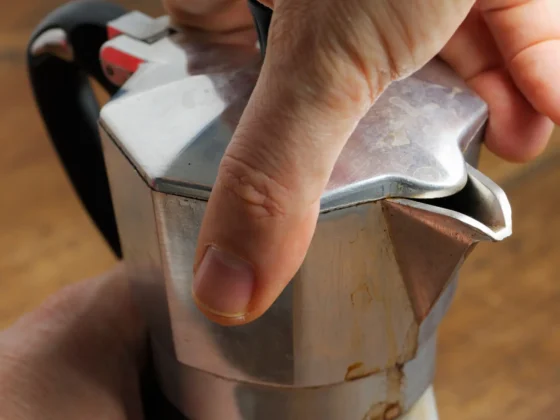In the vast and intricate world of coffee, there exists a technique that promises a coffee experience like no other: double brewed coffee. For those wondering, can you brew coffee twice? The answer is a resounding yes! Delving into the realms of double or triple brew reveals a method that amplifies both flavor and caffeine content, offering enthusiasts an elevated caffeinated journey. This guide will journey through the nuances, techniques, and secrets behind double brewed coffee, unlocking flavors and intensities that you might have never thought possible in a regular cup of joe.
Tired of reading? Give your eyes a rest and listen to the article below.
- Introduction & Key Takeaway
- https://app.mysoundwise.com/tracks/16990533451845432e.mp3
- Understanding Double Brewed Coffee
- https://app.mysoundwise.com/tracks/16990540909430164e.mp3
- Brewing Methods for Double Brewed Coffee
- https://app.mysoundwise.com/tracks/16990541344220623e.mp3
- Intensifying Flavor: The Double Grounds Approach
- https://app.mysoundwise.com/tracks/16990541552529150e.mp3
- Expert Tips for the Perfect Double Brew
- https://app.mysoundwise.com/tracks/16990542168973162e.mp3
- Things to Avoid When Making Double-Brewed Coffee
- https://app.mysoundwise.com/tracks/16990542729584570e.mp3
- Conclusion & FAQs
- https://app.mysoundwise.com/tracks/16990543020703535e.mp3
Double Brew Coffee: Key Takeaway
- Elevated Experience: Double brewing coffee is not just about amplifying caffeine content; it’s an exploration into deepening flavor profiles, revealing intricate notes, and enhancing the overall coffee experience.
- Method Variations: There are multiple ways to achieve a double brew, from combining different brewing methods to simply doubling the grounds, each offering unique flavor outcomes.
- Precision Matters: Temperature control, grind size, and the choice of brewing equipment play pivotal roles in achieving the perfect double brew. Maintaining temperatures between 195°F to 205°F (90.5 – 96.1°C) and choosing the right grind size for the method can make a world of difference.
- Potential Pitfalls: While double brewing opens the door to intensified flavors, it’s crucial to avoid certain practices like introducing brewed coffee into automatic machines or Moka pots, which can compromise both equipment and flavor.
- Customizable Strength: One of the great advantages of double brewing is the ability to adjust the strength to one’s preference. Whether you’re seeking a caffeine punch or a more diluted, nuanced taste, double brewing offers the flexibility to get your desired concentration and flavor profile.
Understanding Double Brewed Coffee
As we venture deeper into the complexities of coffee preparation, the double brewing method emerges as a standout technique. Offering a richer taste and a robust caffeine punch, double brewed coffee is both an art and a science. This section will shed light on what it is and why many coffee enthusiasts are gravitating towards it.
What Is Double Brewed Coffee?
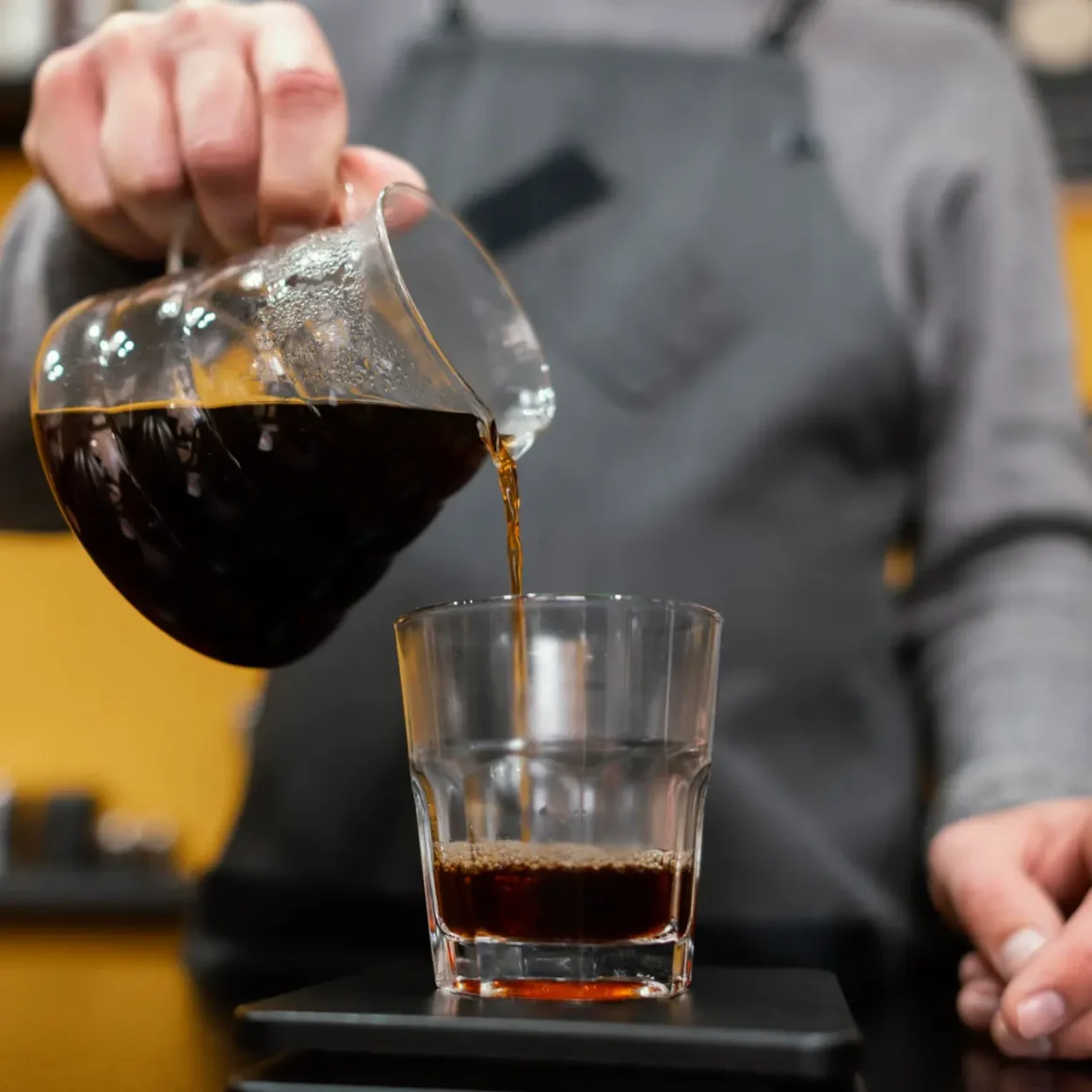
Double brewed coffee refers to a method where coffee is brewed using already brewed coffee instead of water. This results in a drink that’s significantly stronger in flavor and caffeine content (1). To imagine this process, think of brewing a regular pot of coffee. Then, instead of using water for your next brew, you use the coffee from the first brew. This method intensifies the coffee’s aroma, taste, and caffeine strength.
Here’s a breakdown of how double brewing works:
- Step 1: Brew a regular batch of coffee.
- Step 2: Use the brewed coffee as the ‘water’ for the next brew.
- Step 3: Savor a richer, more concentrated cup of coffee.
Many often wonder: can you brew coffee twice? The answer is yes, and this method of using already brewed coffee to brew again is what results in double brewed coffee. Additionally, another approach to achieving a double brew is by doubling up on the coffee grounds, which intensifies the flavor and strength of your brew.
Why Double Brew Coffee?
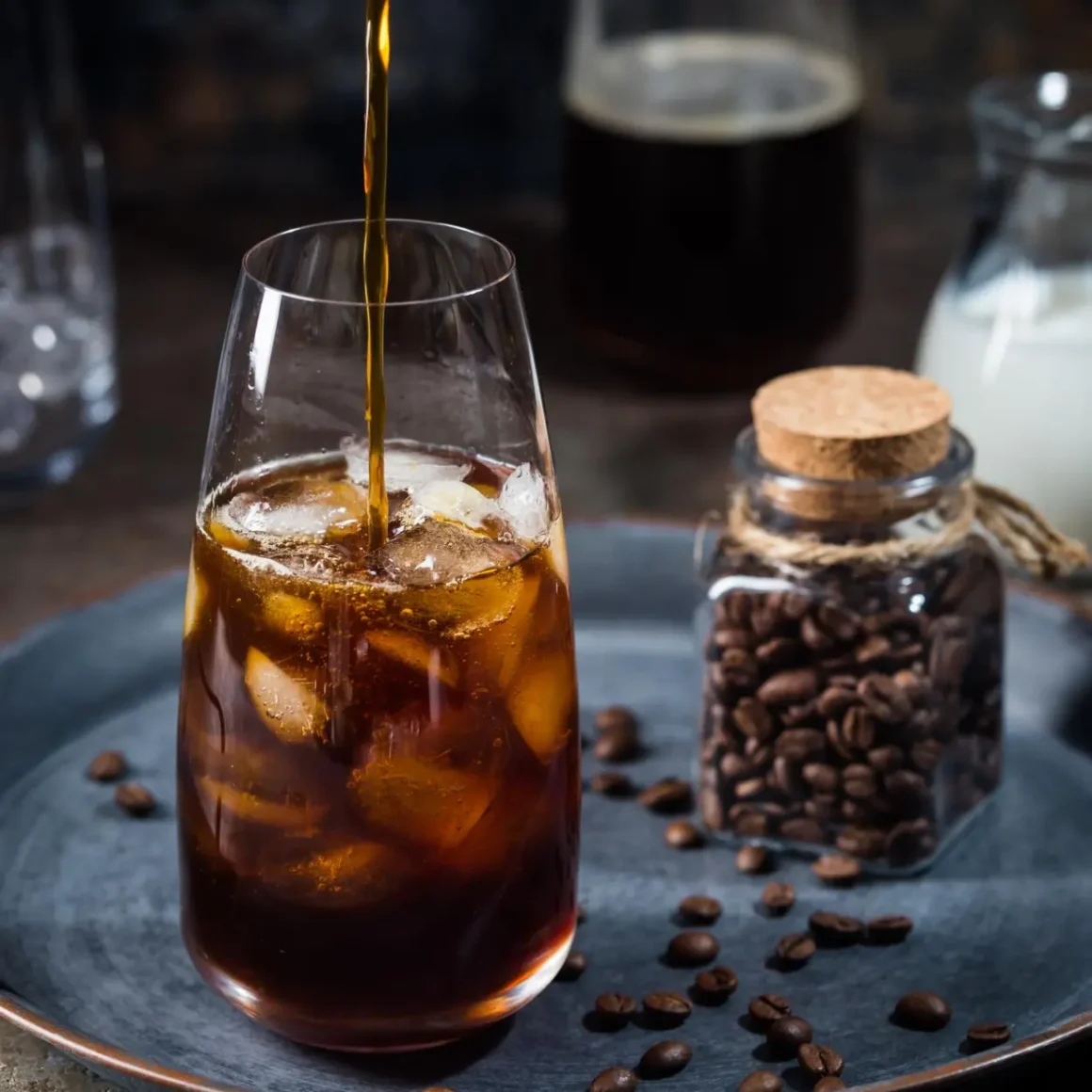
Double brewing coffee has been increasingly embraced by both casual drinkers and true aficionados. Here are some compelling reasons to consider the method:
- Richer Base for Specialty Drinks: Without an espresso coffee machine, double brewed coffee serves as an ideal base for specialty beverages such as lattes or cappuccinos, offering a more intense foundation.
- Ideal for Iced Coffee: The naturally intensified flavor of double brewed coffee counters the dilution effect of ice, ensuring a consistent taste. For an even richer experience, consider using coffee ice cubes with your double brew.
- Enhanced Caffeine Content: While it’s hard to quantify precisely, double brewed coffee undoubtedly contains more caffeine (2). This is due to the additional extraction process, even though the coffee particles might hinder maximum extraction compared to pure water. Those craving that extra energy boost can rely on this method.
- Experimentation and Customization: The double brew process is a playground for coffee lovers. Adjusting the coffee variety, and roast level, or even switching to Robusta coffee beans can yield different results, opening doors to unique flavor profiles.
- Controlled Strength: Beyond just flavor, double brewing offers the flexibility to customize the coffee’s strength. If it’s too intense, a splash of water or milk can adjust the brew to your liking.
Double brewed coffee is not just another way to make coffee; it’s an exploration of depth and flavor, pushing the boundaries of what one can expect from their cup of joe. Whether you’re seeking a more potent caffeine hit or an enriched flavor experience, double brewing may just be the method you didn’t know you were missing.
Brewing Methods for Double Brewed Coffee
Delving into the art of double or triple-brew coffee requires a nuanced understanding of various brewing combinations. Each method imparts its unique flavor and strength profiles to the coffee, allowing aficionados to customize their brew. Here, we’ll explore three popular combinations to achieve that rich double brewed cup.
Drip Coffee Maker and French Press
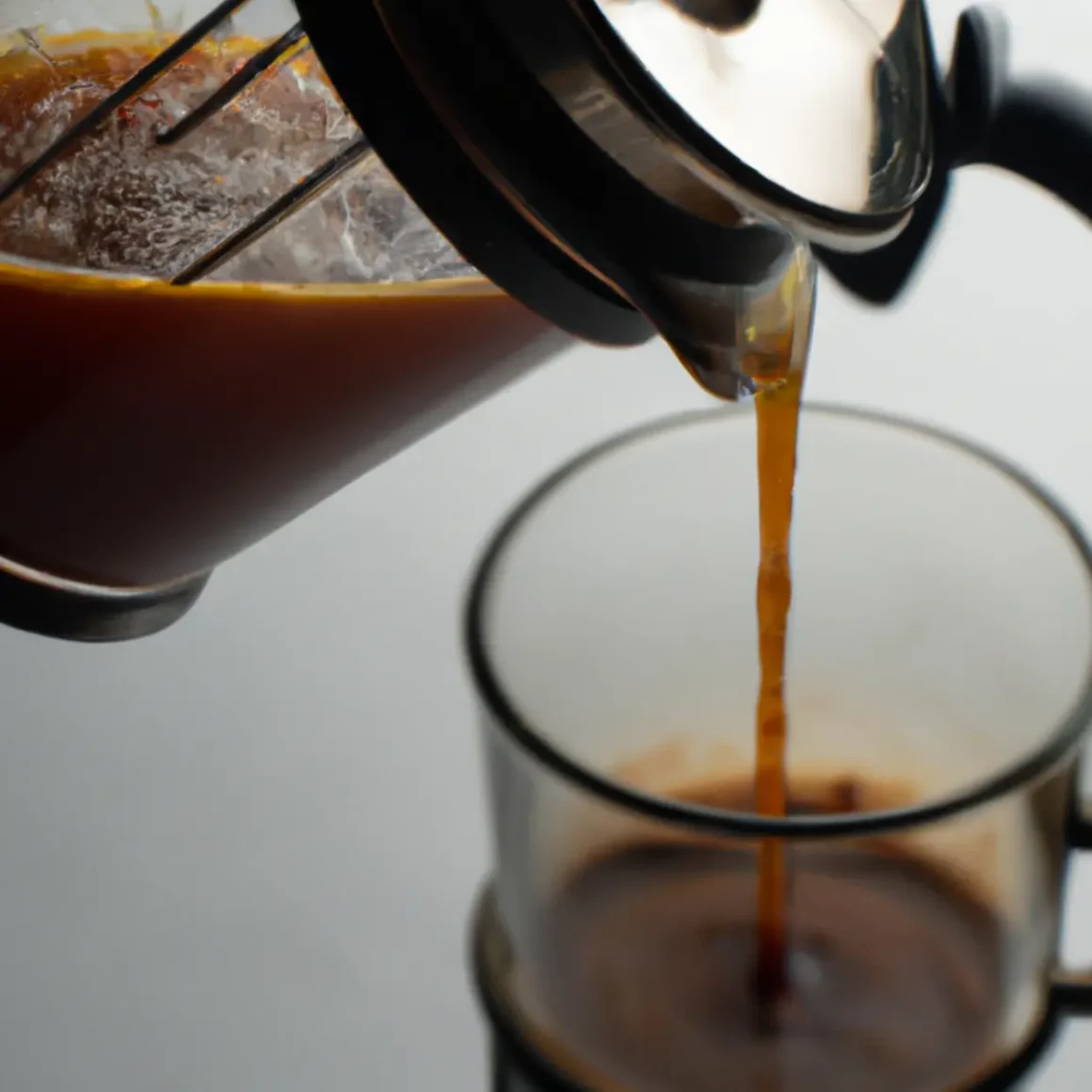
The fusion of a drip coffee maker and a French press results in a flavorful blend with a smooth texture. Here’s how you can make it work:
- Initial Brew with Drip Coffee Maker:
- Start by brewing your coffee using the drip coffee maker as you normally would.
- Aim for a stronger brew as this will be the base for your double brew.
- Secondary Brew with French Press:
- Pour the brewed coffee from the drip machine into the French press, replacing the water.
- Add your ground coffee to the French press, keeping in mind the intensity you desire.
- Let it steep for about 4-5 minutes before pressing.
Results: This method extracts additional flavors from the beans, while the French press enhances the coffee’s body, resulting in a rich, full-bodied brew.
Drip Coffee Maker and Pour Over
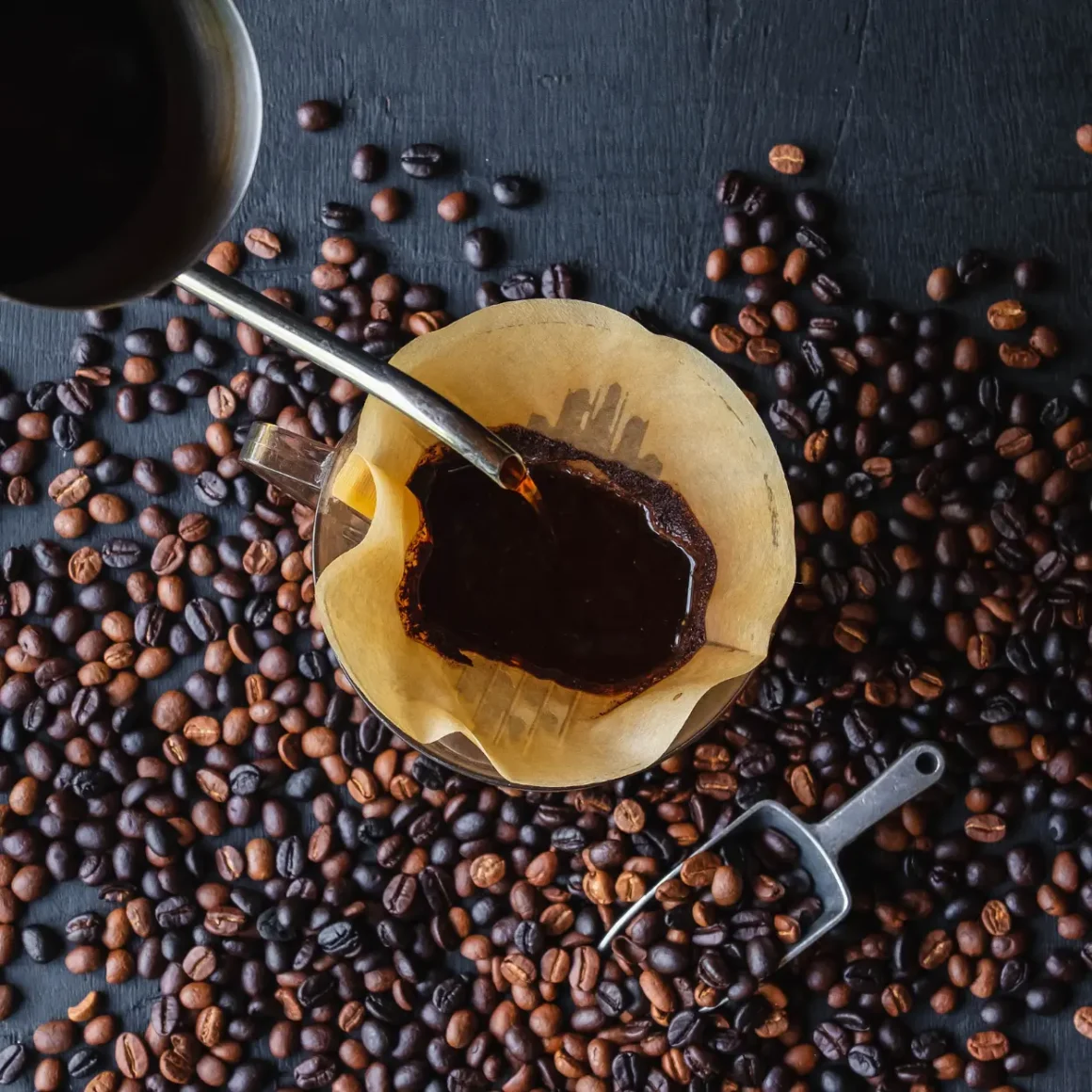
Pairing a drip coffee maker with a pour-over method offers a balanced blend of strength and aromatic subtlety. Here’s the procedure:
Initial Brew with Drip Coffee Maker:
- As always, begin with your drip machine. Opt for a slightly coarser grind and a strong brew to set the stage for the double brewing process.
Secondary Brew with Pour Over:
- Wet the filter of your pour-over setup to remove any paper taste, then add your ground coffee (3).
- Start by initiating the coffee bloom: Carefully pour a small quantity of coffee over the coffee grounds, letting them bloom for approximately 30 seconds.
- Continue to pour the coffee from the drip machine over the grounds in a circular motion, ensuring even saturation.
- Allow it to filter through, capturing the intensified flavors.
Results: This combination retains the bright aromatic notes typical of the pour-over method, while the double brewing process amplifies the overall coffee profile.
Moka Pot and French Press
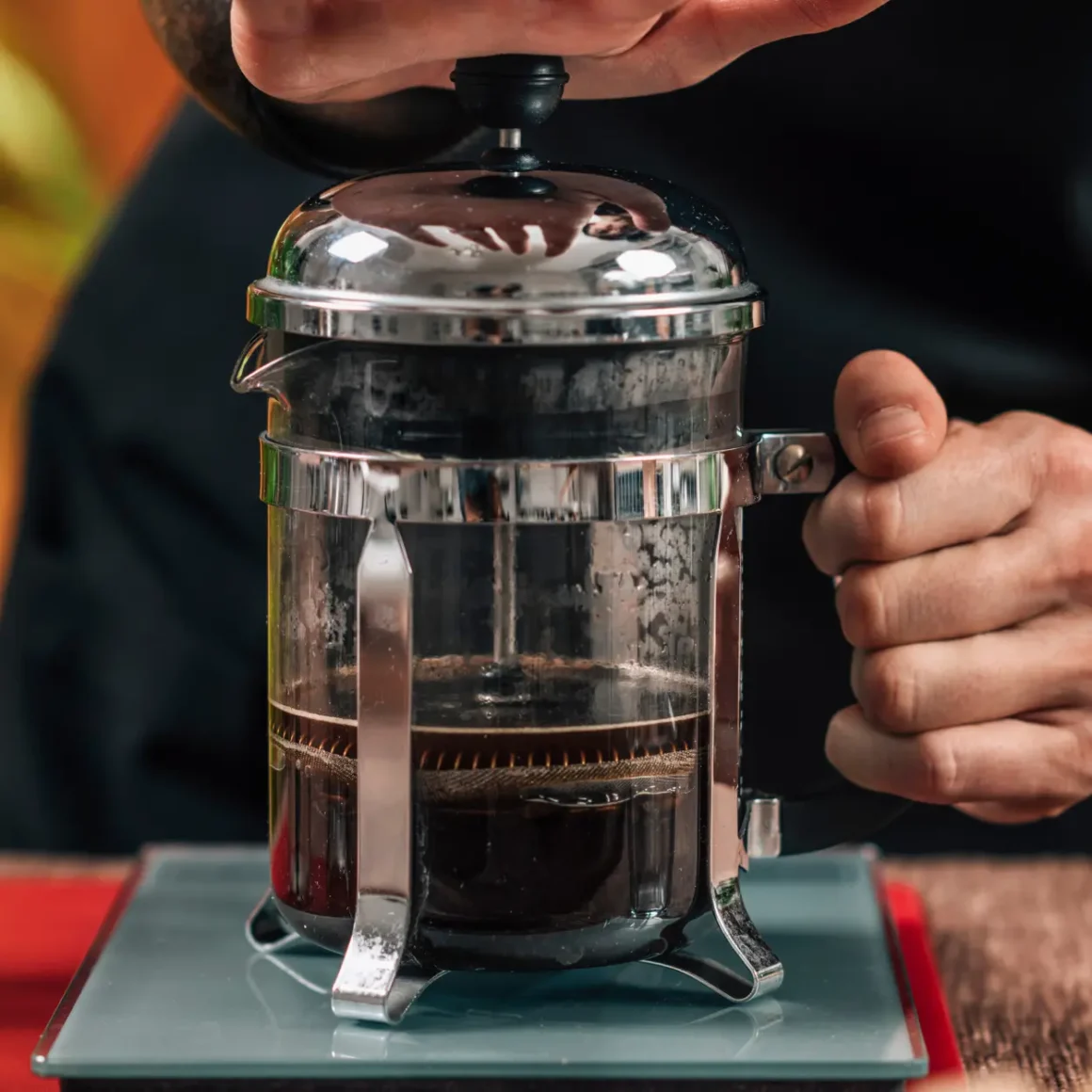
This pairing might seem unconventional, but it results in a potently rich and aromatic coffee brew.
Initial Brew with Moka Pot:
- Fill the Moka pot’s bottom chamber with water and the funnel with finely ground coffee.
- As the Moka pot brews, it will produce a concentrated coffee, which will serve as the base for your next brew.
Secondary Brew with French Press:
- Transfer the coffee from the Moka pot into your French press.
- Add coarsely ground coffee beans.
- Allow it to steep for 4-5 minutes, then press down gently.
Results: The intensity of the Moka pot combined with the depth of the French press results in an incredibly robust brew, yet velvety in texture.
Moka Pot and Pour-Over Double Brew
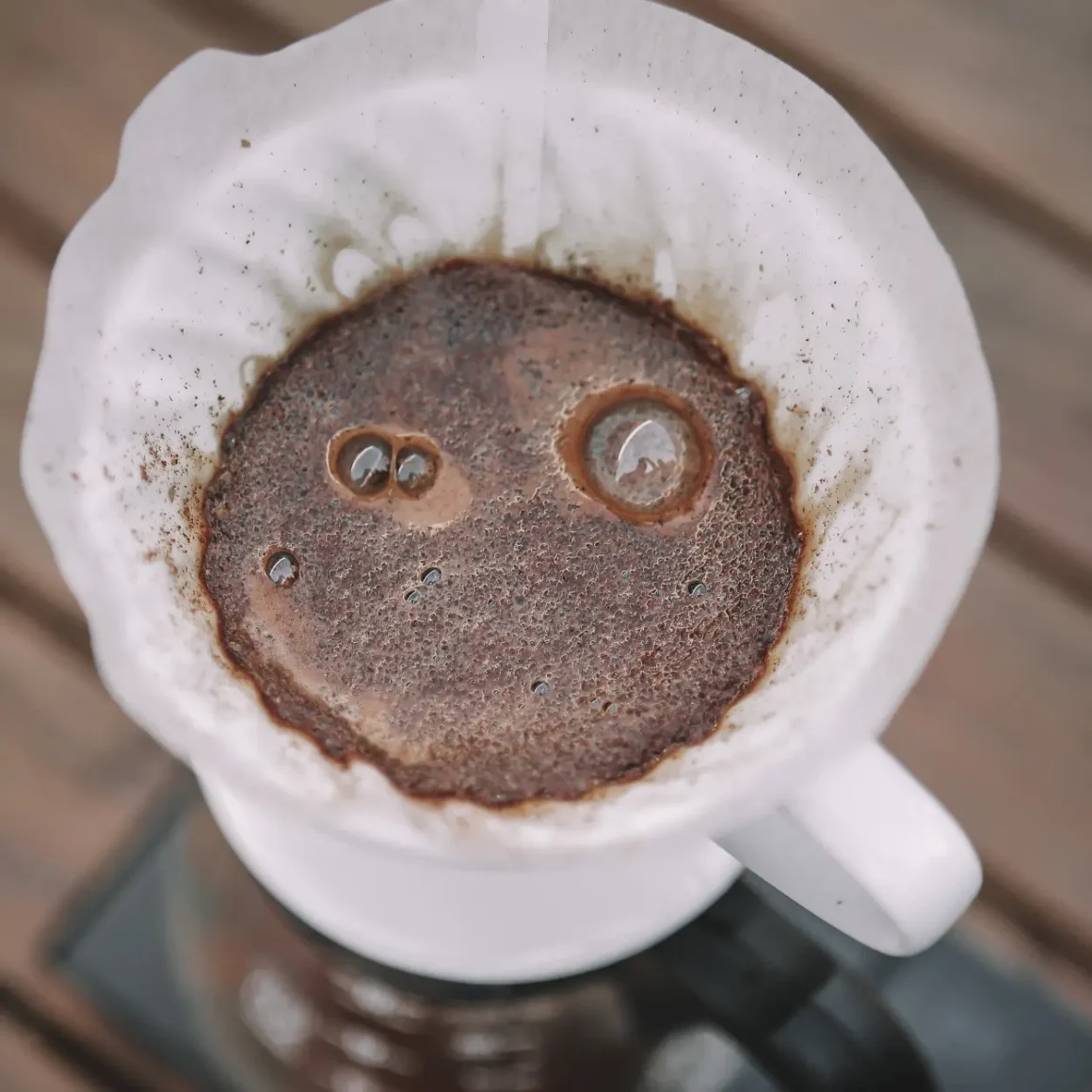
Blending the concentrated power of the Moka pot with the aromatic finesse of the pour-over creates a harmoniously balanced coffee. Here’s how to master this delightful combination:
Initial Brew with Moka Pot:
- Begin by filling the Moka pot’s bottom chamber with water and its funnel with a fine coffee grind.
- Allow the Moka pot to brew its signature concentrated coffee.
Secondary Brew with Pour-Over:
- Pre-wet the pour-over filter to remove any paper taste and stabilize the brewing temperature.
- Place your ground coffee inside the filter.
- Begin with the coffee bloom: Gently pour a small amount of the coffee over the coffee grounds, allowing it to bloom for about 30 seconds. You’ll notice the grounds swell and release gases during this process.
- Slowly pour the coffee from the Moka pot over the grounds in a steady, circular motion, ensuring an even soak.
- Allow the brew to drip through, making the most of the pour-over’s ability to capture nuanced flavors.
Results: This pairing results in a coffee that marries the robust intensity of the Moka pot with the aromatic and clean finish of the pour-over method, providing a unique taste profile that is both bold and refined.
Intensifying Flavor: The Double Grounds Approach
Building on our exploration of double brewed coffee, we now shift our focus from combining brew methods to the intriguing technique of doubling up on coffee grounds. This method, as straightforward as it sounds, presents a whole new array of sensory experiences. Here’s a deep dive into how simply augmenting the quantity of grounds can transform your coffee game.
Key Advantages of Doubling Your Grounds:
- Depth of Flavor: Upping the grounds means delving into deeper flavor realms. Expect each sip to be more profound, bringing out the innate characteristics of the beans.
- Aromatic Intensity: More grounds translate to a richer aroma that wafts through the room, setting the stage for an invigorating brewing experience.
- Versatile Strength Options: By simply adjusting the volume of coffee grounds, one can tweak the strength of the brew, crafting a cup that resonates perfectly with individual preferences.
- Boosted Caffeine Content: For those who lean on coffee for its invigorating effects, doubling the grounds offers a caffeine kick that’s notably more pronounced.
Harnessing the power of doubled grounds offers coffee aficionados a fresh perspective on their beloved brew. It’s an invitation to experiment, to discover new depths, and to fine-tune the coffee experience to uncharted perfection. Whether you’re in pursuit of heightened flavors or a caffeine surge, the double grounds approach is a tantalizing proposition worth exploring.
Expert Tips for the Perfect Double Brew
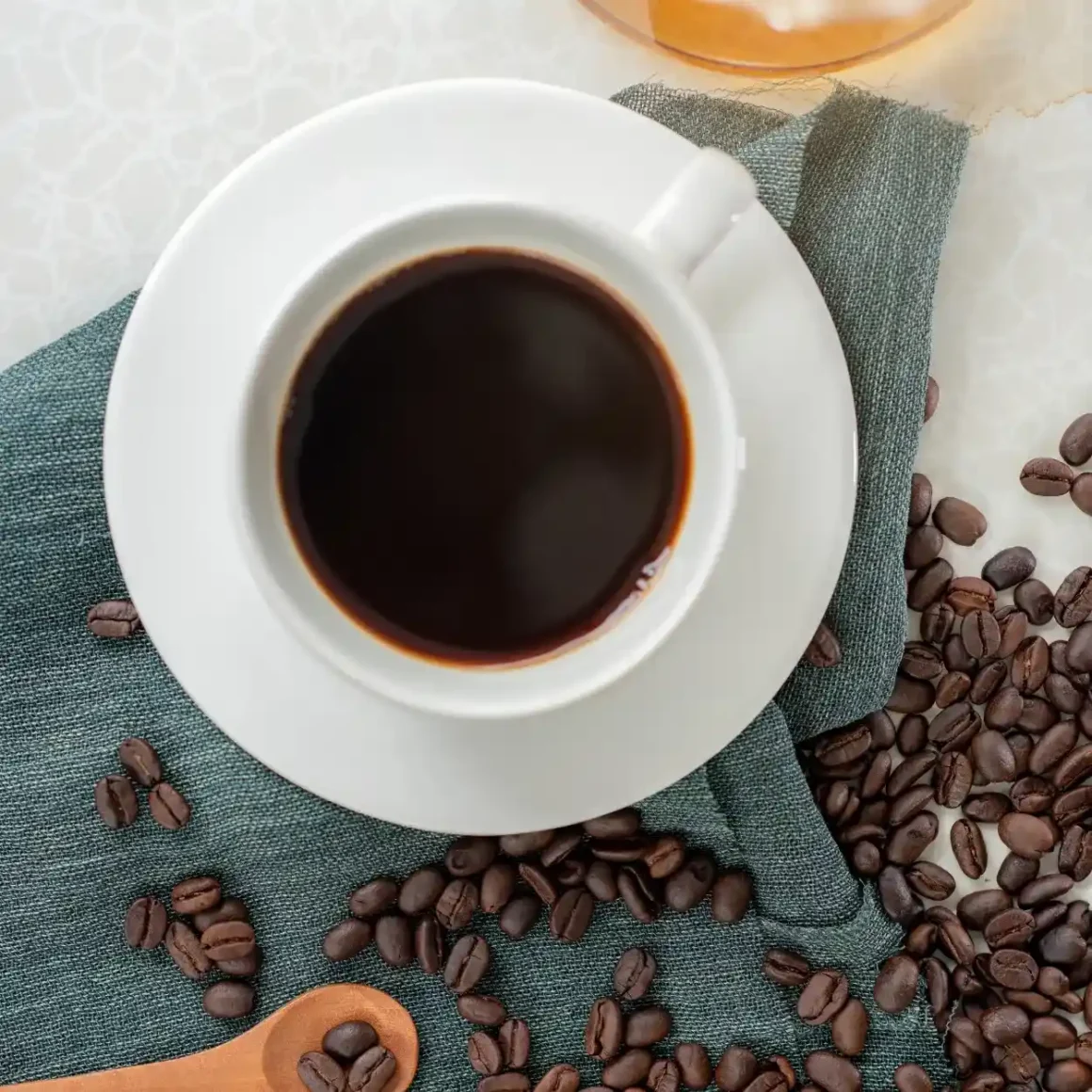
Double brewing coffee is an art that requires precision, technique, and understanding of the coffee’s behavior. Drawing from expert advice, we’ve gathered some pivotal tips to ensure that your double brew is nothing short of perfection.
- Advance Preparation is Key: While your initial brew is taking shape, set the stage for the next round. By having your second set of grounds ready, you can effortlessly transition from the first to the second brew, ensuring a fresh and seamless double brew experience.
- Temperature Precision: The significance of maintaining the right temperature must be balanced. For the optimal double brew, ensure your coffee’s temperature hovers between 195°F to 205°F (90.5 – 96.1°C). Though it’s worth noting, the final brew might be a tad cooler than your standard single brew, given the double brewing process. Should you crave a warmer beverage, consider incorporating warm milk.
- Choose the Right Brewing Container: The container you pick plays a pivotal role, especially when the pour-over method constitutes the second brewing phase. A container with a spout, such as a teapot, can greatly enhance control and precision during the pour, proving invaluable for this method. The spout ensures a controlled flow, which is integral for achieving a balanced double brew, especially with the pour-over technique.
- Grind Size Adjustments: A unique challenge with double brewing is the altered extraction dynamics. For instance, when choosing a pour-over for the second brew, a medium-fine grind is preferable. In contrast, a French press, given its longer steeping duration, pairs well with a coarser grind. As always, taste is subjective, so don’t hesitate to play with grind sizes to match your flavor palate.
Things to Avoid When Making Double-Brewed Coffee
Venturing into the realm of double-brewed coffee is a delightful journey, but it comes with its own set of cautions to ensure both optimal taste and the longevity of your equipment. Here are some potential pitfalls to steer clear of:
- Using Automatic Drip Machines for Double Brewing: While it may seem tempting, consistently introducing brewed coffee into an automatic drip machine can spell trouble. Over prolonged use, this practice can lead to the buildup of residue, which not only tarnishes the flavor of your coffee but can also shorten the lifespan of your machine (4).
- Introducing Brewed Coffee to Moka Pots and Espresso Machines: The intricate design and functioning of Moka pots and espresso machines make them ill-suited for double brewing. Pouring brewed coffee into them can introduce impurities and residue. This not only compromises the nuanced flavors but also risks damaging the equipment.
- Damaging Components with Brewed Coffee: It’s essential to be aware that certain components of coffee brewing equipment, especially the water reservoirs or chambers, aren’t designed to handle brewed coffee. Adding brewed coffee to these components can cause deterioration or malfunction over time.
- Ensure Separate Brewing: When double brewing, always ensure that you brew your coffee separately for each round. Opt for immersion brewing techniques, like a French press, or pour-over, like a Chemex or V60, to maintain the integrity of the process and flavor.
Conclusion
Embarking on the adventure of double brew coffee is not just about seeking a caffeine punch; it’s about appreciating the depth, richness, and complexities that the world of coffee offers. As we’ve journeyed through this guide, it’s evident that the art and science of double brewing can transform an ordinary coffee experience into something extraordinary. Whether you’re a novice or a seasoned barista, there’s always room to experiment, innovate, and discover new flavors.
FAQ
Is double brewed coffee stronger than regular coffee?
Yes, double brewed coffee is typically stronger in flavor and caffeine content than regular coffee.
What's the ideal brewing time for double brewed coffee?
The ideal brewing time varies based on the method, but generally, the second brew should last 2-4 minutes.
Can I double brew decaffeinated coffee?
Yes, you can double brew decaffeinated coffee, though the flavor will be intensified without the added caffeine punch.
